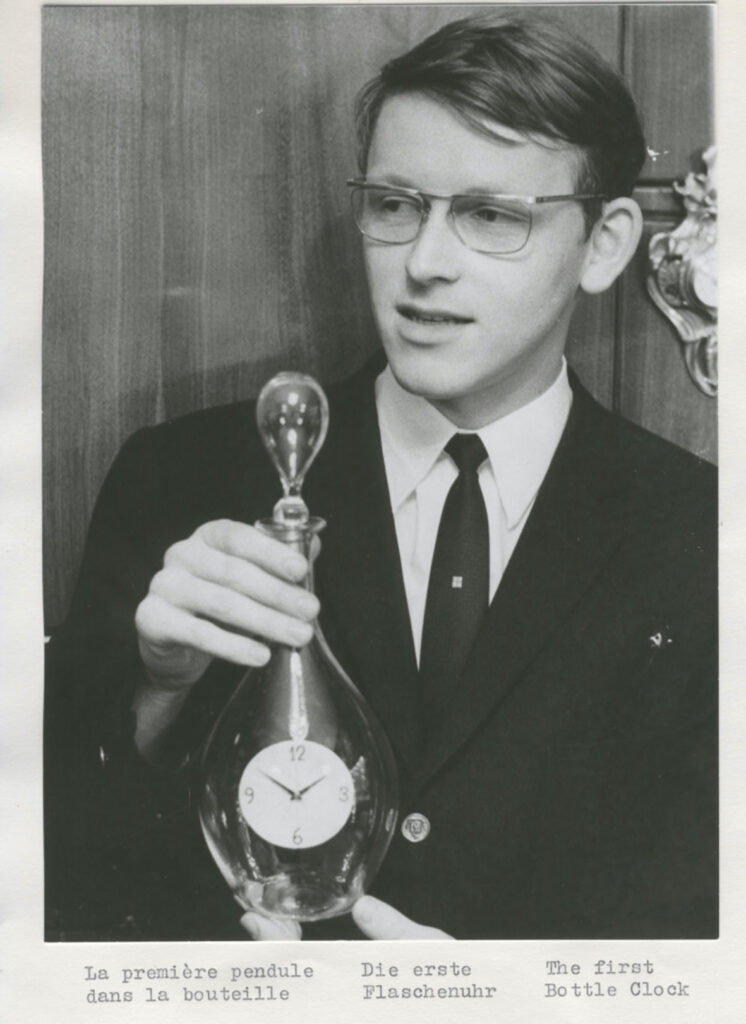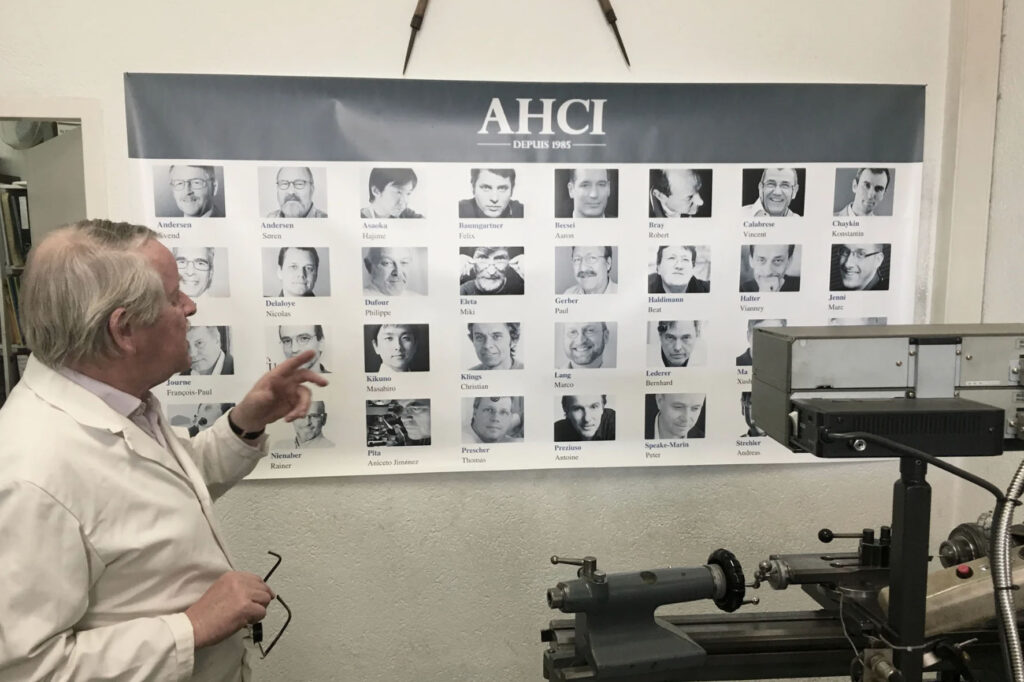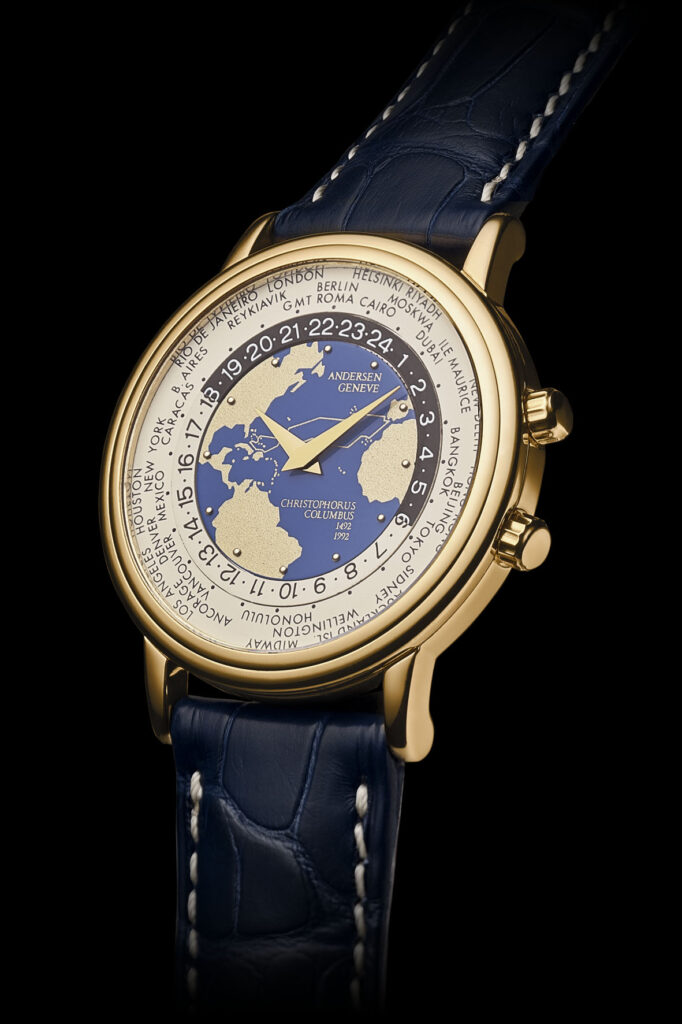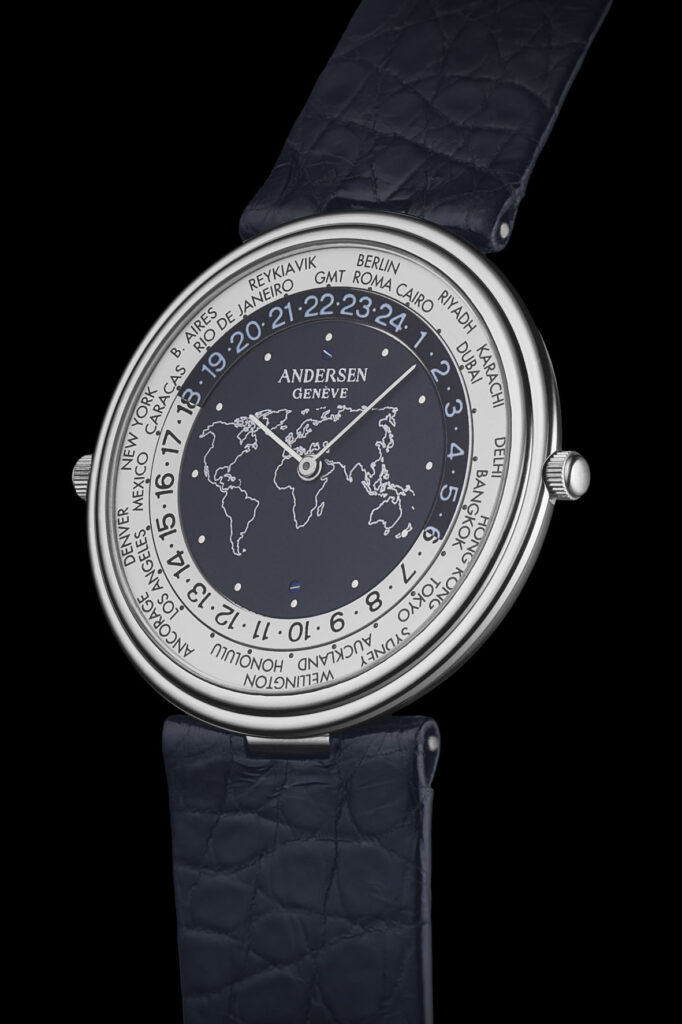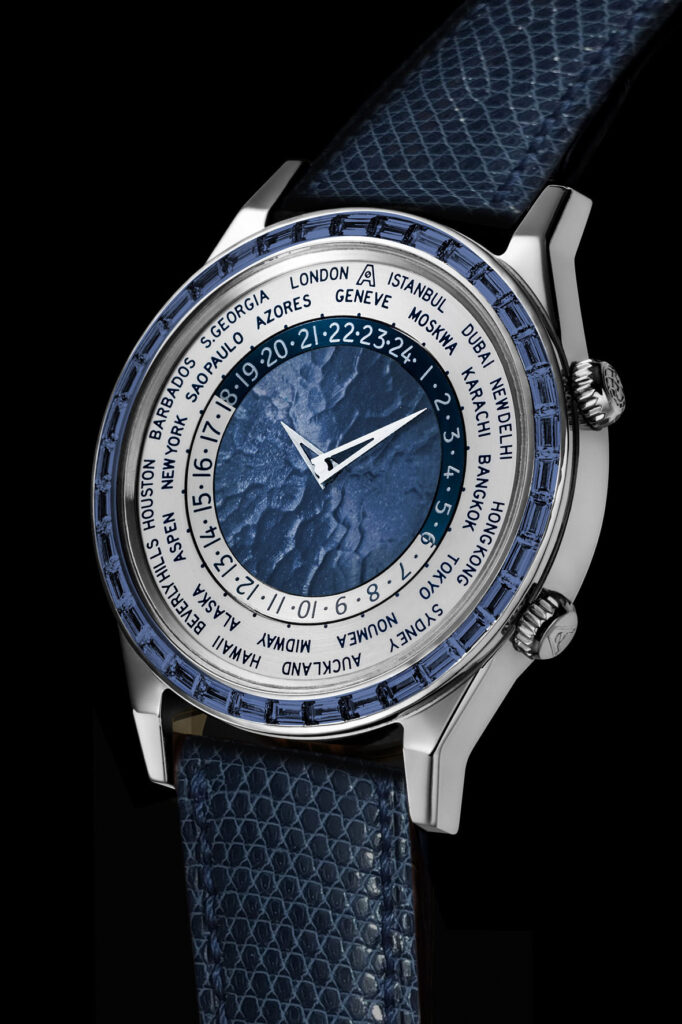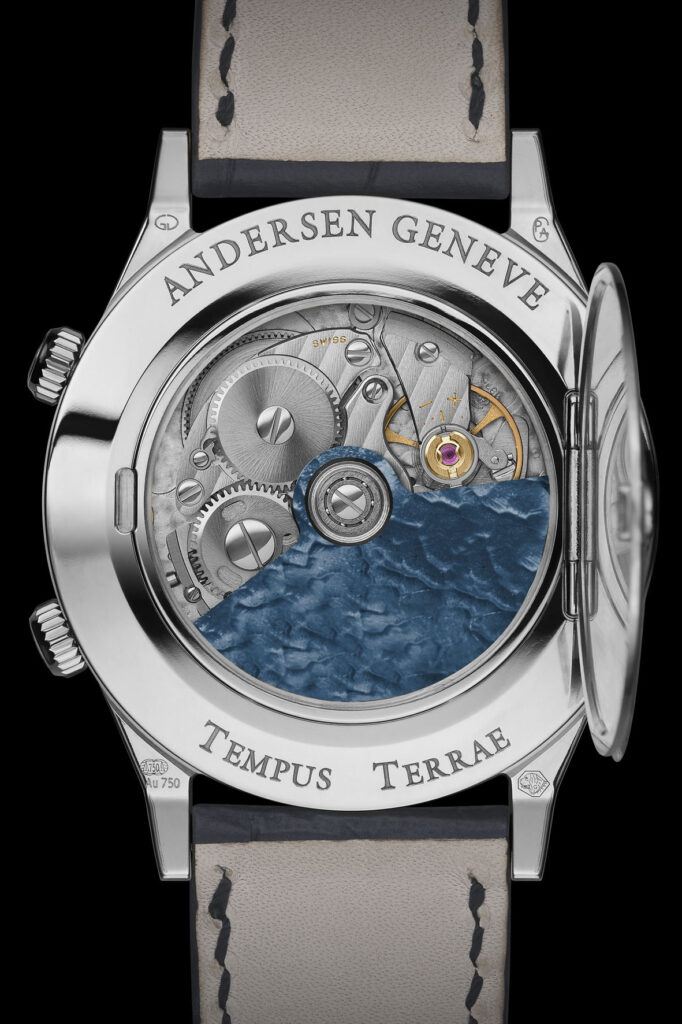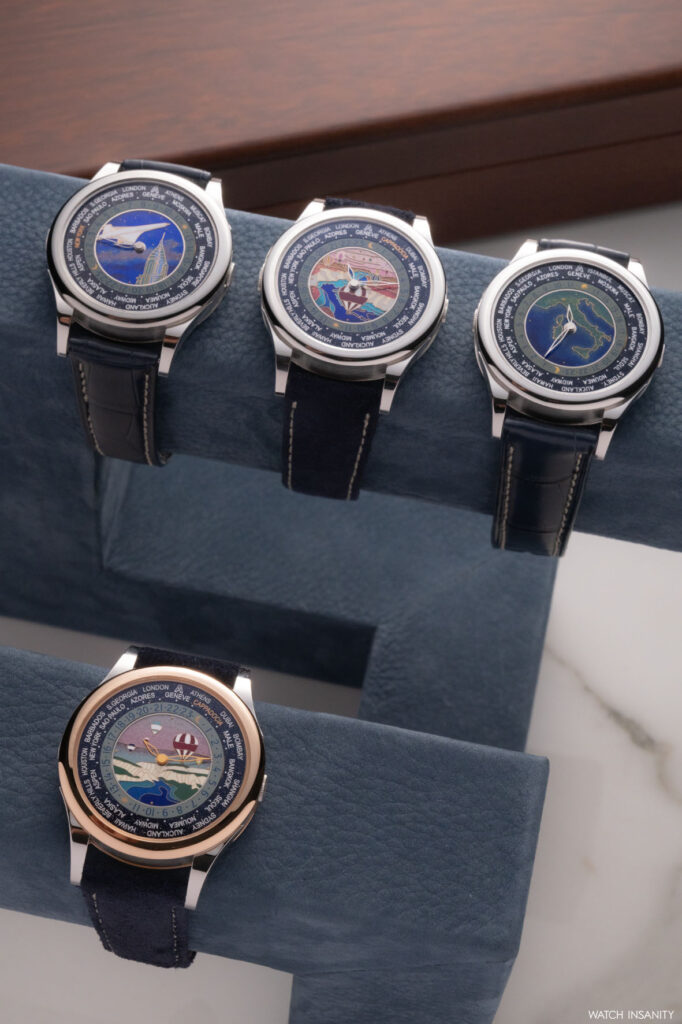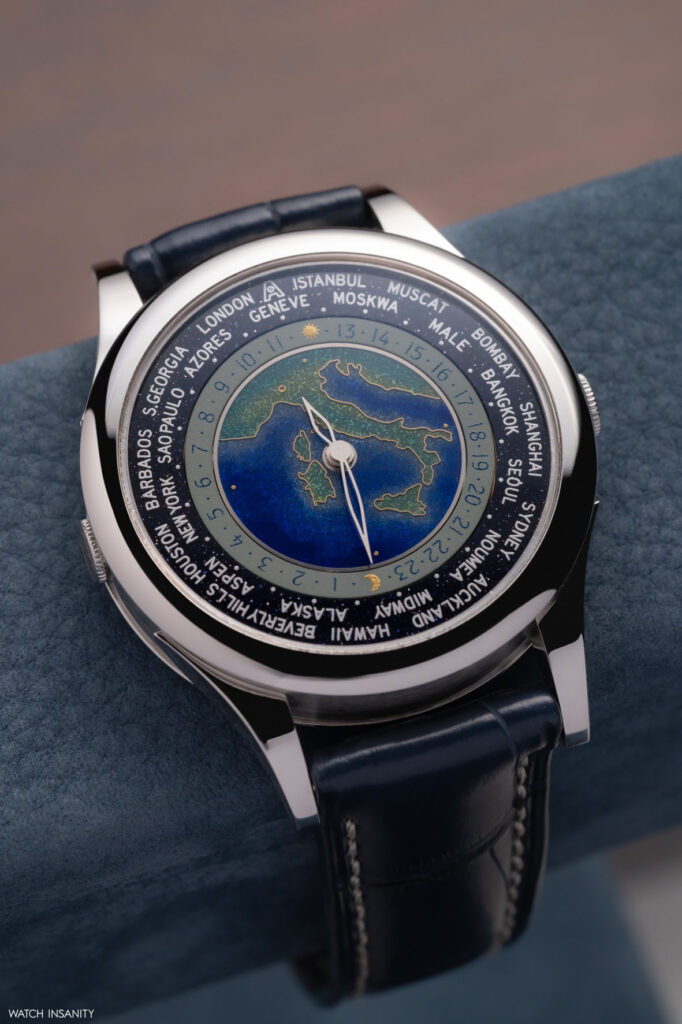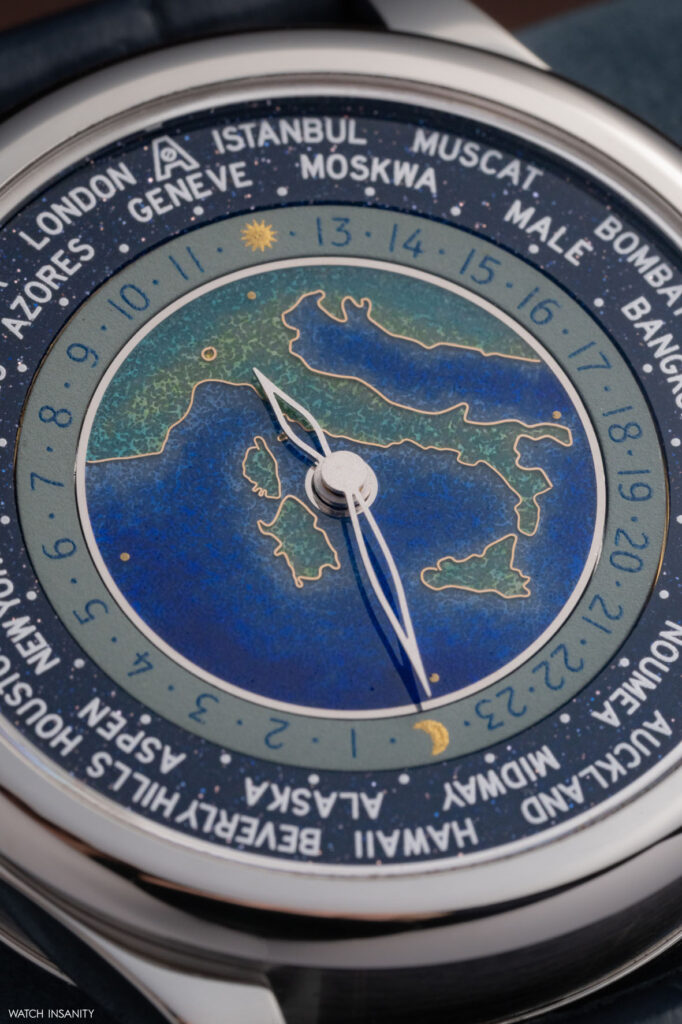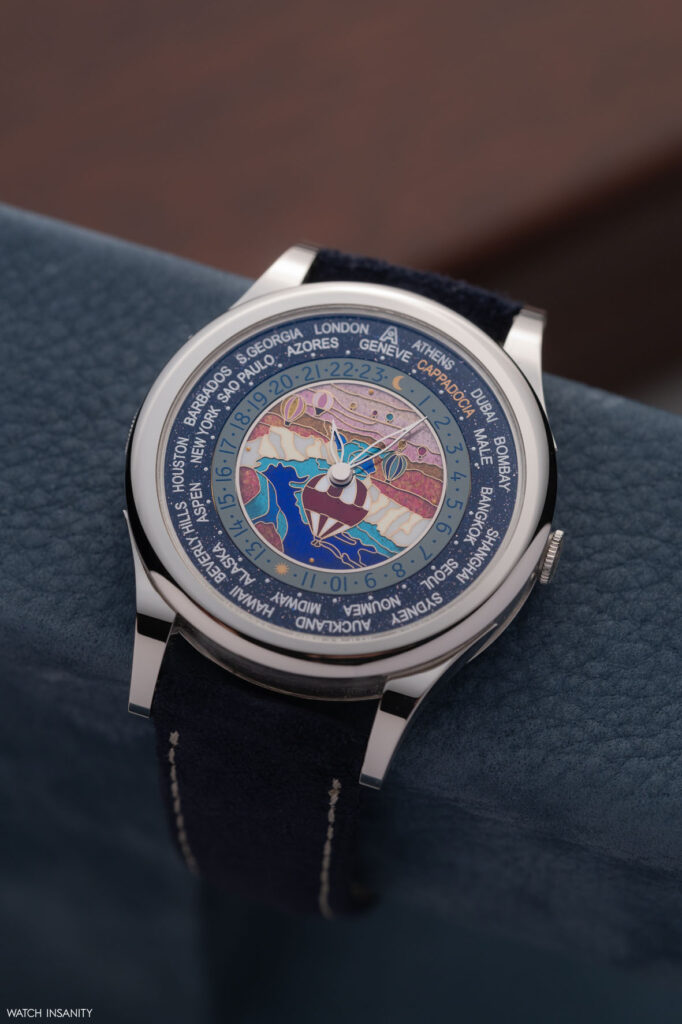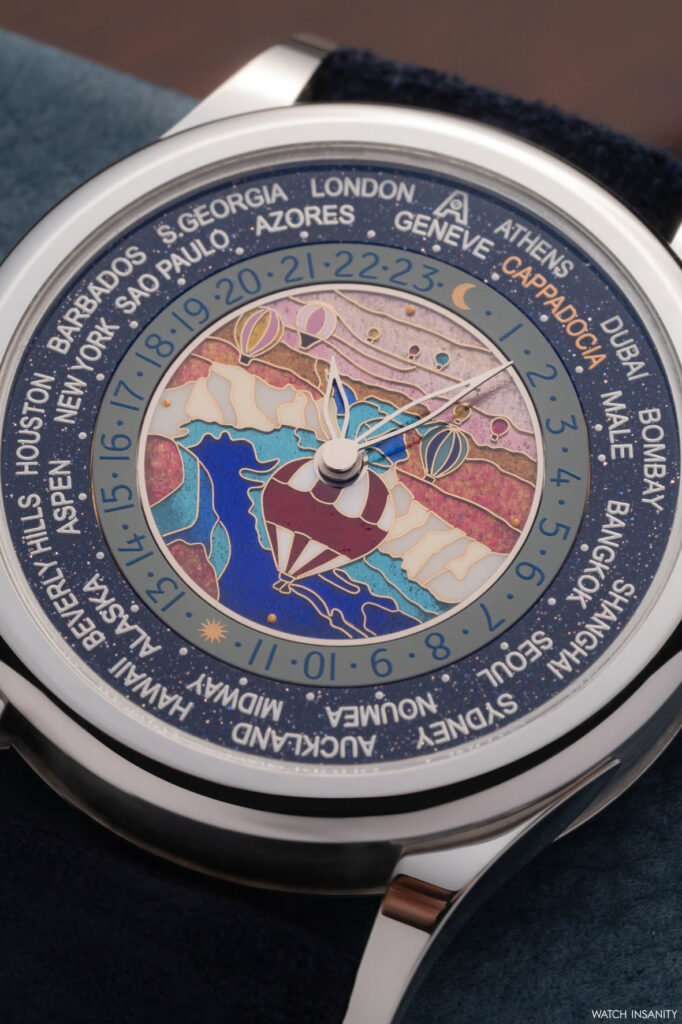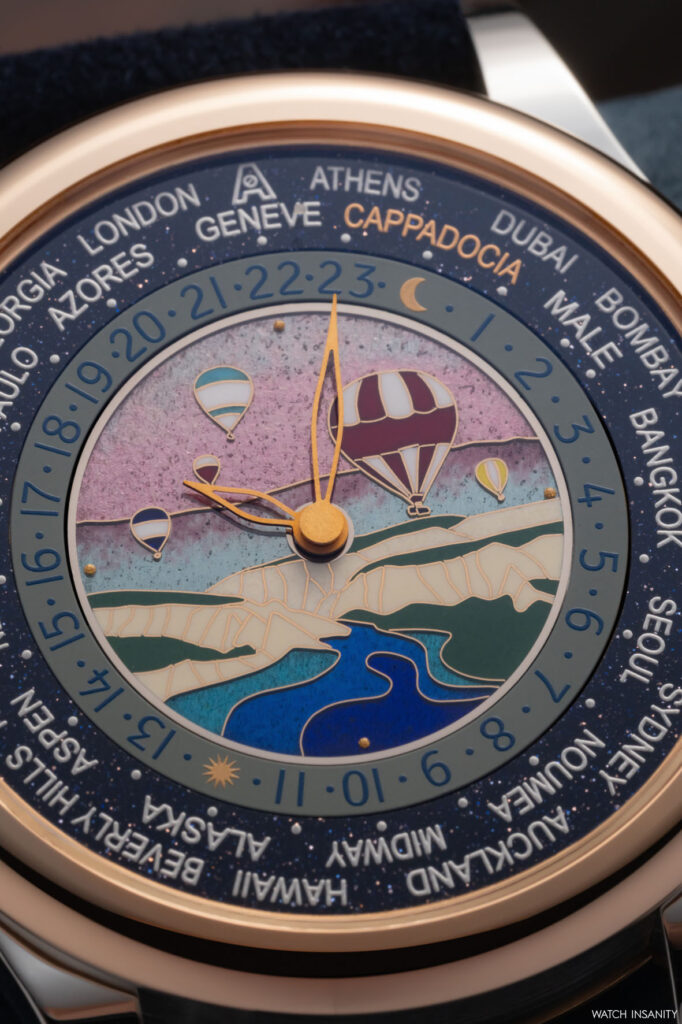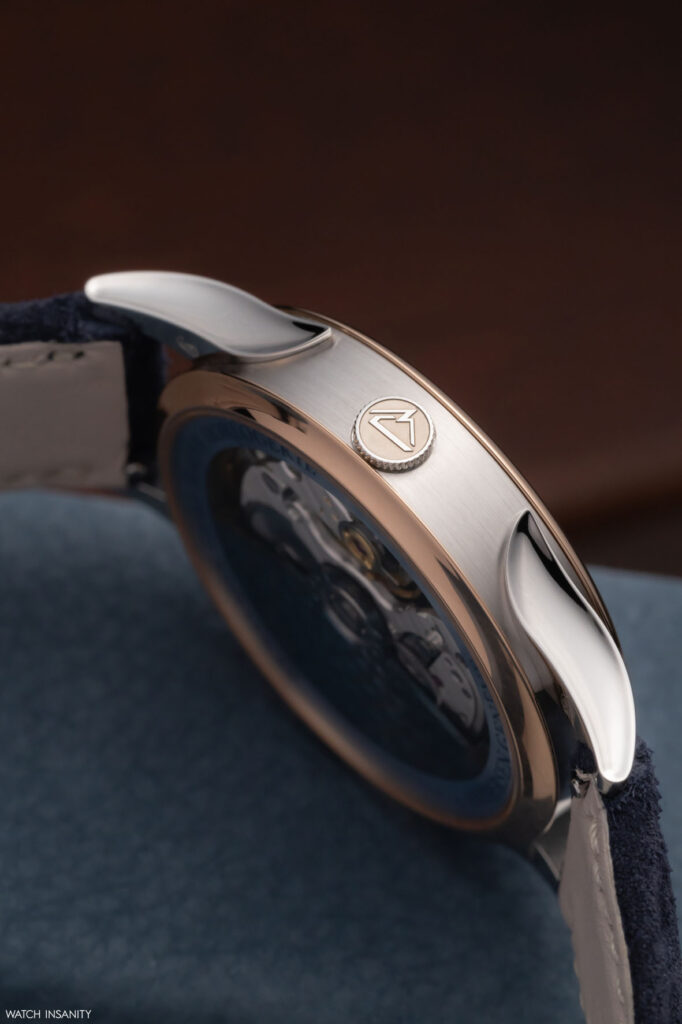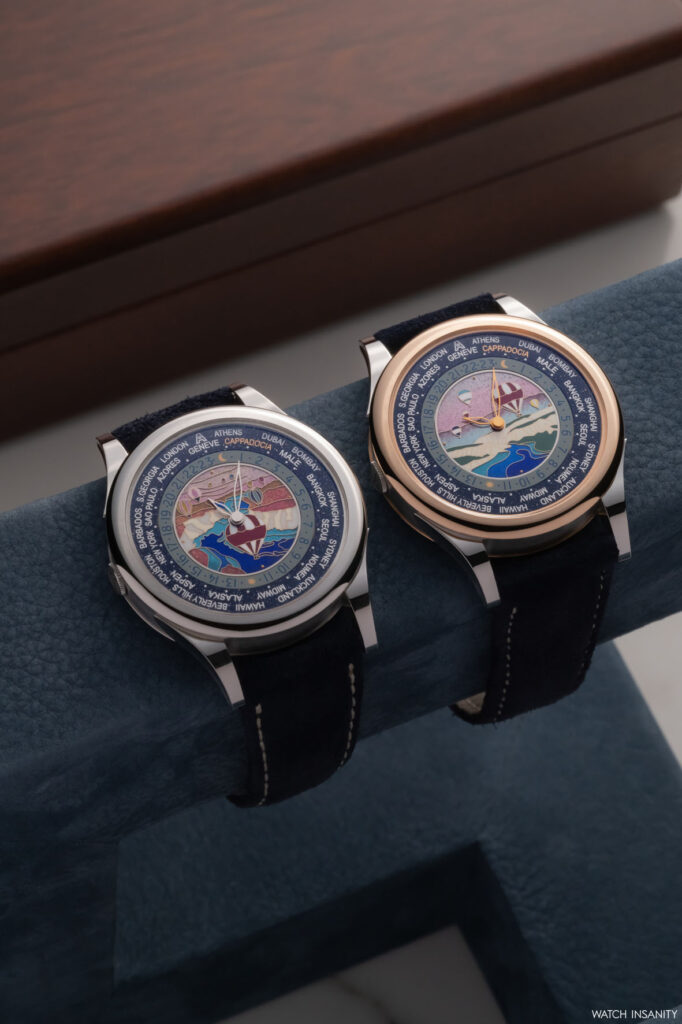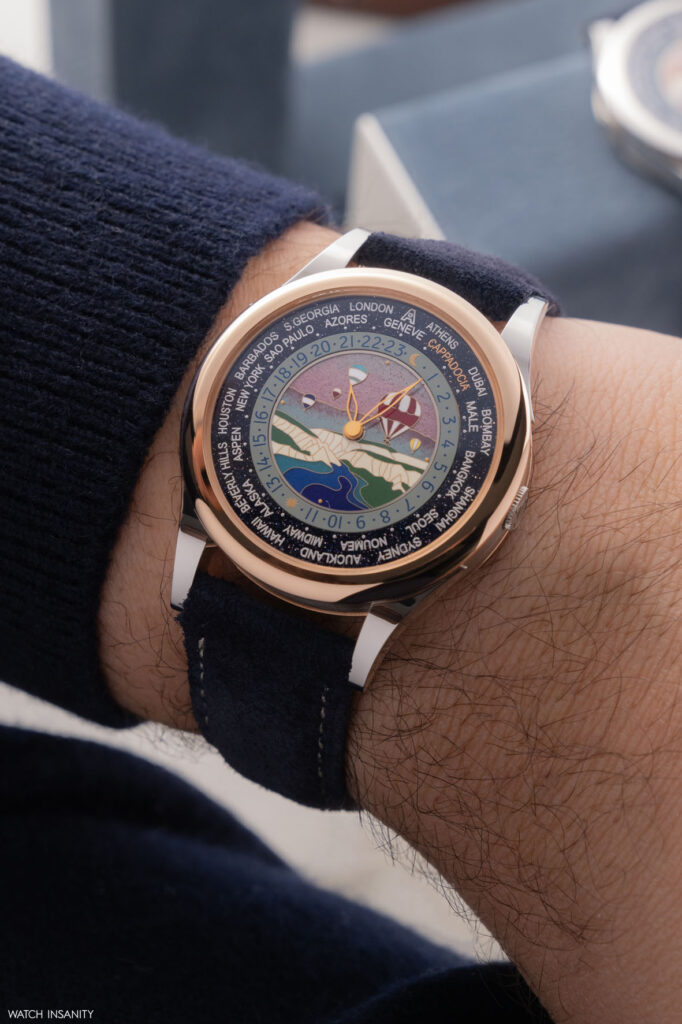ANDERSEN Genève and the vocation for uniqueness
5 July 2024A few years ago, Adidas launched a campaign with an inspirational title: ‘Impossible is nothing’. A payoff that, in watchmaking, would be perfect for a maison like ANDERSEN Genève. After all, when he made himself known to the enthusiast public, Svend Andersen, the man who would later found the brand, was immediately nicknamed ‘the watchmaker of the impossible’. A challenging epithet, which gives the measure of how much this man contributed to characterising watchmaking in the second half of the 20th century with a unique style and skill – embodied in the four world timer watches featured in this article, the fruits of a singular story.

TO THE ORIGINS OF ANDERSEN GENÈVE
Born in Denmark in 1942, Svend Andersen completed a four-year apprenticeship as a watchmaker after primary school. In 1963 he moved to Switzerland to see how the world’s best watches were made. He worked for Gübelin Lucerne and, in 1965, moved on to work for Gübelin Geneva, where he was also in the after-sales service due to the fact that he spoke several languages. And, in the meantime, he studied, thought about and absorbed the watchmaking art.
A few years later he had the intuition that brought him to the fore. It all started with the observation of an empty bottle, a remnant of a New Year’s Eve celebration: since people used to put sailing ships in bottles, why not also put a timepiece in them? Thus was born, in 1969, the Bottle Clock, Svend Andersen’s ‘impossible’ watch. Presented at the ‘Montres et Bijoux’ show in Geneva, it was a critical success and represented the young craftsman’s launch pad into the world of grand watchmaking.
At the time, he was still working at Gübelin Geneva. One day, as he recounted, some people from Patek Philippe ‘crossed the street’ (the brand’s head office is a stone’s throw from Gübelin) and asked him to work in the maison’s Grande Complication atelier. If he was able to assemble a watch inside a bottle while working in his room, perhaps he had what it took to handle complications with great skill. So, for almost a decade, Svend collaborated with Patek Philippe on the restoration and servicing of some of the world’s most complicated watches, and studied the secrets of a complication at which Patek excelled and which was to become his distinctive mark: the World Time.
Towards the end of the 1970s, following the quartz crisis, Patek Philippe reduced wages and working hours and Andersen found himself working only two days a week. One more coincidence helped him out of his difficulties. A Swiss-German collector contacted him and asked him to make a case for the movement of a Louis Audemars pocket watch he owned: well preserved, but without its gold case. After months of study, he designed it and worked with a casing maker to fulfil the collector’s request. The result was a success and dozens of collectors contacted him with similar requests. This was the turning point. In 1979, he left Patek Philippe and set up his own business.
THE FOUNDATION OF AHCI
He devoted his early years to pocket watch cases, and that period was fundamental to the development of his later career as a watchmaker, training his eye for design and honing his knowledge of watchmaking history. And, in 1989, he created the first ANDERSEN Genève watch, a souscription world timer, the Communication, the first example of which was delivered in 1990 to an Italian customer.
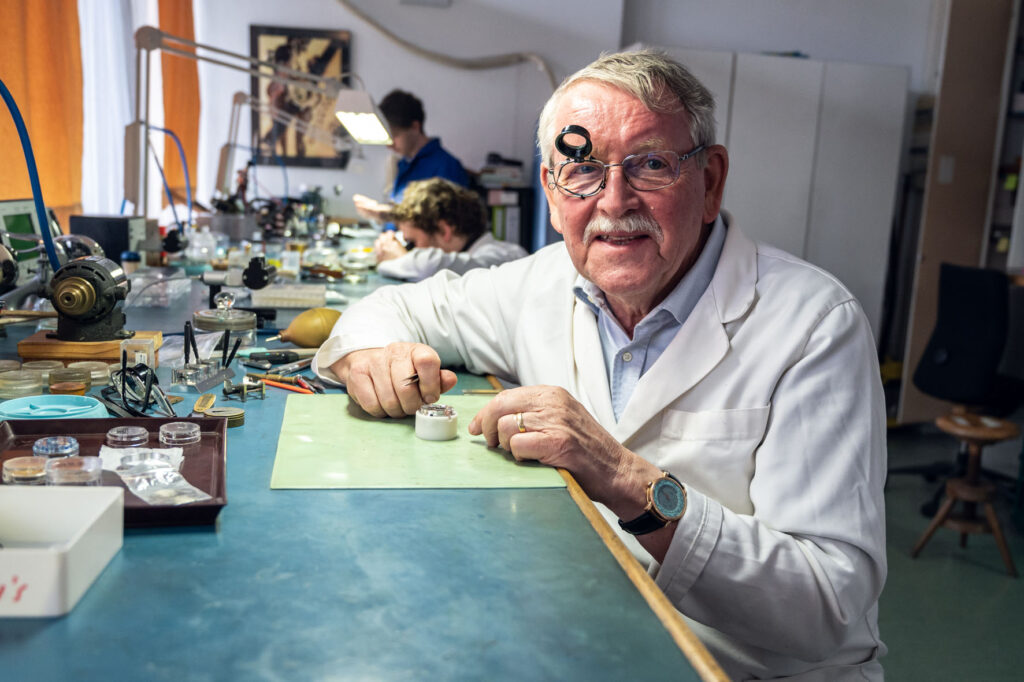
In between, 1985 marked a fundamental step for him and for Swiss watchmaking as a whole. Together with the master Vincent Calabrese, he founded the Académie Horlogère des Créateurs Indépendants (AHCI), a community of independent watchmakers driven by the desire to preserve watchmaking traditions and avoid the risk that they, who were its custodians, would disappear as individuals within the big brands.
To do this, it became necessary to promote the activities of independent watchmakers and support their discoveries, inventions and creative approach to developing the watchmaking art. This is why, even today, the work of the academy founded by Andersen and Calabrese is of vital importance, and received well-deserved recognition with the Special Prize that was awarded to them at the Grand Prix d’Horlogerie de Genève 2023.
ANDERSEN GENÈVE AND THE WORLD TIMER COMPLICATION
His years at Patek Philippe allowed Svend Andersen to develop a particular sensitivity towards the world timer complication. Not surprisingly, it was enclosed in his first watch, and today it is his signature complication. The Communication commemorated the first world timer wristwatch produced by Louis Cottier, and its module, developed and assembled by the atelier, made it easy to read the time around the world, without pressing buttons or turning crowns.
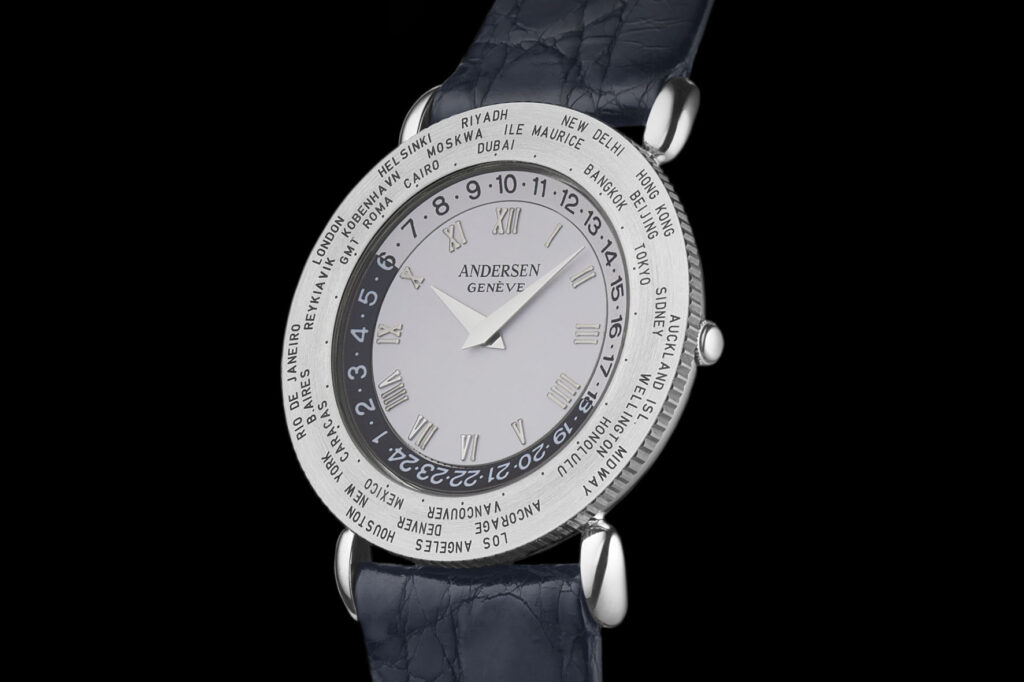
The second, third and fourth subsequent world timers were the Christophorus Colombus, the Mundus and, in 2004, the 1884. In 2015, it was the turn of the Tempus Terrae, inspired by the two-crown watch developed by Cottier in the 1950s; that piece celebrated 25 years (1990-2015) of ANDERSEN Genève’s world timers and was produced in a limited edition of 25 in yellow gold, 25 in red gold and 25 in white gold. Collectors could choose to have a special engraving on the back cover of the watch, making it unique. That concept of customisation, which we will return to later, remainsvery dear to the Maison to this day.
In 2020, the Tempus Terrae was enriched with 36 baguette diamonds invisibly set on the bezel, and in 2022, ANDERSEN Genève presented two editions with precious bezels. One was adorned with 36 aquamarine baguettes and one with blue sapphires. The white gold case stood out for its ‘broken’ angular lugs and double crown, and was polished and finished by hand. The blue of the stones matched that of the dial, which was hand-engraved with an undulating tapisserie guilloché motif.
Svend, 82 years old next July, is still active at the Atelier, but on a part-time basis. However, since 2015, Pierre-Alexandre Aeschlimann and a team of brilliant watchmakers have been developing and producing the maison’s watches. Of course, they do not fail to show and consult him on all creations.
MISSION: CUSTOMISATION
We spoke earlier about the concept of customisation. Well, the subject of this article is precisely the five world timer references for which this concept is key to everything. Because one of ANDERSEN Genève’s points of excellence, as an independent brand, lies precisely in the possibility for each customer to ask for customised decorations and engravings, and, therefore, unique workmanship. With the certainty that the atelier will execute them to perfection thanks to its absolute mastery of certain watchmaking métiers d’art, from enamelling to engraving.
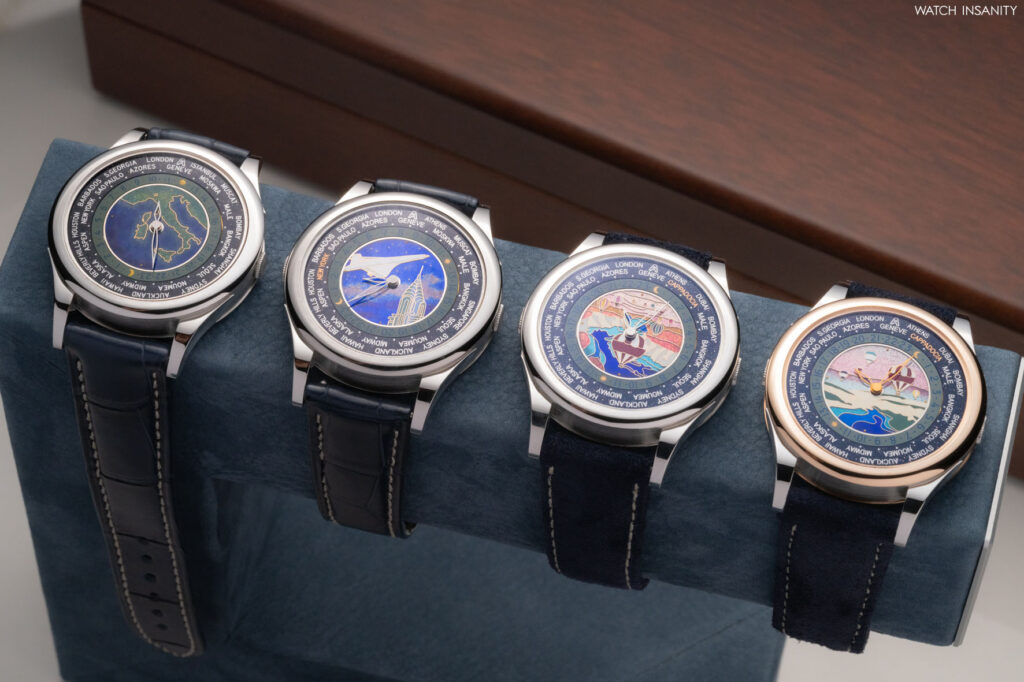
Enamelled dials are ANDERSEN Genève’s signature, produced using both the champlevé and cloisonné techniques. The former involves inserting enamel into tiny recesses carved into the dial, a process that requires skill, patience and know-how. The cavities are cut into the surface of the dial and filled with vitreous enamel. The piece is then fired until the enamel melts and, once cooled, it is smoothed and polished. In the cloisonné technique, thin wires or small metal partitions, cells or alveoli (cloisons in French) are welded or glued to the dial; enamel is poured into the areas revealed by the metal, thus obtaining a sort of mosaic whose tesserae are circumscribed by the metal strips.
On the guillochage ofthe dials, there is little to say. Thanks to the expertise of the ANDERSEN Genèvecraftsmen who master this particular technique, the watches adornment can be characterised by intricate or repetitive decorations such as straight lines, curves, concentric circles, chess or interlacing. What stands out with this design is both the fineness of the stroke and the attention to detail that make some of these decorations simply mesmerising.
THE ANDERSEN GENÈVE WORLD TIMER NOVELTIES
And so we come to the magnificent four world timers that ANDERSEN Genève added to its rich tradition of enamelled excellence. These are the Celestial Voyager Supersonic, two versions of the Sunset over Cappadocia and a special edition characterised by a dial – very dear to collectors among our fellow citizens – on which the profile of Italy stands out. We will start with the latter, but first we should dwell on the characteristics common to the four references, which regard both the dimensions of the case, the city ring, and the movement.

The watches’ cases are 37.8 mm in diameter by 10.1 mm thick, water-resistant to 3 bar. They are hand-finished, with a fine satin-brushed finish on the sides and polished lugs. The sapphire crystal with inside and outside anti-reflective treatment is present both on the dial and the back. Notable is the presence of the double crown, at 3 and 9 o’clock: the first is used to set the time, the second to turn the city ring. The latter is made of aventurine, a noble and elegant material, and differs only in the indication of the city on the meridian of reference (we will come back to this later).

The calibre is a high-quality automatic movement, perfected by ANDERSEN Genève, with a time-zone complication module developed and assembled at the workshop. The extensive hand-finishing work on certain components involves the ratchet and crown wheels, which are polished to a mirror finish; all visible surfaces of the wheels are embellished with colimaçon and circular-grained work. The screws are also polished and finished, as is the plate of the self-winding mechanism. The calibre operates at 3Hz (21,600 vibrations per hour) and has a 40-hour power reserve.
HOMAGE TO ITALY
Let us now come to the watches. The reference dedicated to Italy pays tribute to the beauty of our country with a cloisonné enamelling, in which the outlines of the boot’s coasts and islands are made of a gold thread. The dominant colours are the green of the land and the blue of the Mediterranean sea. However, the work is not flat and uniform; the green enamelling is speckled, almost imitating the variety of natural shades of grasses and leaves, while the blue enamelling turns from dark to light as it gets closer to the land.
Green is also found on the ring with the 24-hour display, day and night. It is a darker, uniform green which, together with the inner enamelling of the dial, gives the entire watch an austere but, at the same time, very vital look. The hour and minute hands, in white gold and with a leaf shape typical of certain ANDERSEN Genève pieces, are skeletonised so that, when in motion, they won’t cover the central decoration excessively. Of this watch, whose case is in platinum, ANDERSEN Genève made only two examples.
ANDERSEN GENÈVE CELESTIAL VOYAGER SUPERSONIC
The second reference is the Celestial Voyager Supersonic,and it has a special history. It was made in collaboration with Benjamin Chee Haute Horlogerie (BCHH), a super exclusive haute horlogerie brand founded in 2019 in Singapore by Benjamin Chee, a local entrepreneur who, over the years, developed a passion for history and design that led him to venture into the watch industry. Over the past 12 years, he has founded three watch brands, of which BCHH is the flagship. It is only natural that a partnership could develop between an exquisite atelier like ANDERSEN Genève and a haute horlogerie house like this one, for unique collectors’ timepieces.
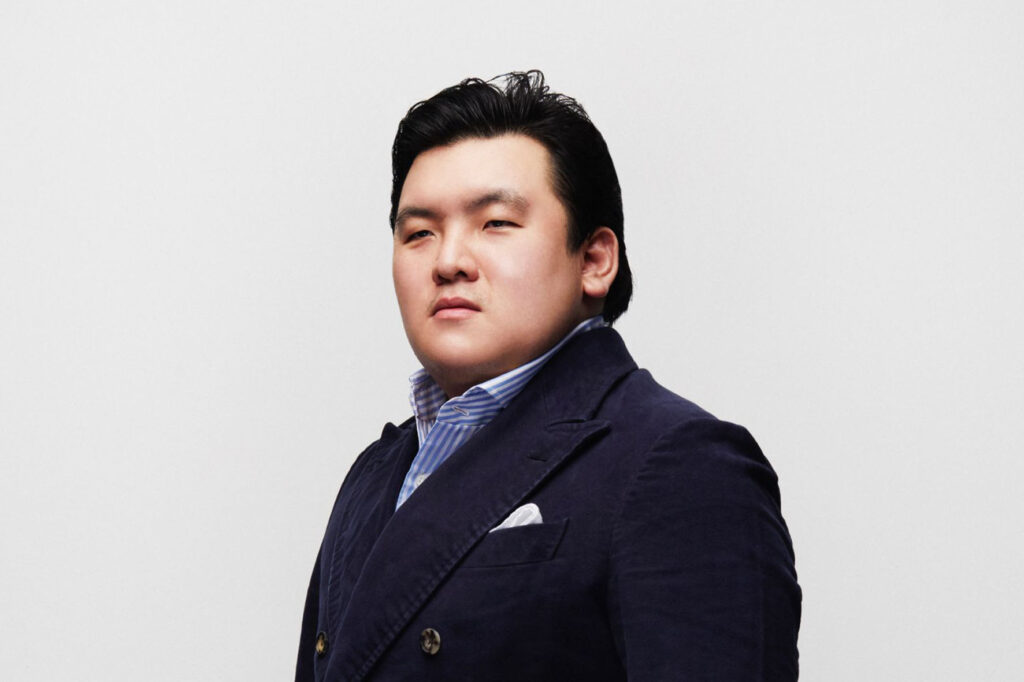
The Celestial Voyager Supersonic is a handcrafted world timer watch limited to 20 pieces, celebrating the spirit of the most symbolic civil aircraft of all, the Concorde. Created in a limited series of 20 pieces – the same number of Concordes that were built – the Celestial Voyager Supersonic presents ANDERSEN Genève world timers’ classic design. What sets it apart is the craftsmanship of the decoration. The dial is in champlevé enamel and depicts the Concorde as it flies over New York’s Chrysler Building at night, en route to JFK airport.
It is precisely in the decoration of the sky that thebeauty and craftsmanship of this timepiece lies. More than 10 shades of enamel have been used to recreate the nuanced tones, each applied and fired individually in several layers. On them are delicately placed so-called gold paillons – tiny particles made by hand, using an ancient and highly specialised process – to represent the shining stars. In keeping with ANDERSEN Genève’s mission – in this case shared with BCHH – to create unique watches, the arrangement of the stars and the Concorde’s livery can be customised at the customer’s request. On the city ring, New York is highlighted in pink gold dust.

The oscillating weight, visible through the sapphire crystal case back, is remarkable: it is made of 21-carat BlueGold (a speciality of ANDERSEN Genève) and decorated with a wave-shaped guillochage engraved with the Concorde’s front silhouette. Speaking of the case back, through it is visible a mother-of-pearl ring around the movement, with the names Benjamin Chee Haute Horlogerie and ANDERSEN Genève. The case is made of platinum, while the bezel and case back are made of grade 5 titanium. As always at ANDERSEN Genève, the lugs are made and polished separately and individually soldered to the case. Their particular design, which the atelier calls ‘ailes d’aigle’, or eagle wings, is exclusive to the collaboration with BCHH.
ANDERSEN GENÈVE SUNSET OVER CAPPADOCIA
From New York we take a transoceanic flight and move, for the next two references, to Turkey, specifically to Cappadocia. And we move from the futuristic Concorde to the more romantic hot-air balloon, starring on the dials of Sunset over Cappadocia. We speak of dials in the plural because, as you can imagine, for each watch the design is unique and unrepeatable. And it represents an evening flight of hot air balloons over the picturesque Turkish region.
The intricate dial is made of cloisonné enamel, with an enamelling technique of the highest quality. In fact, more than a metre of gold wire was used, modelled by hand on a dial less than 18 mm in diameter, on which the enamelling craftsmen of ANDERSEN Genève in La Chaux-de-Fonds used more than 20 colours. The various parts of the decoration were filled in one by one with tiny brushes, and the dial was fired in a kiln more than twenty times; knowing that each firing could destroy the work and force the master enameller to start again.
Here, too, the level of customisation can be pushed to the extreme; to make each of the ten pieces unique, the balloons of each dial can feature different motifs. Like New York on the previous reference, here, Cappadocia is written in pink gold on the city ring, to pay homage to this special edition. Given ANDERSEN Genève and BCHH’s vocation for customisation, every aspect of the watch can be personalised: from the names of the cities, to the enamelled images, to the guilloché motif on the oscillating weight.
Speaking of the latter, it too is in BlueGold, for the production of which ANDERSEN Genève has developed an exclusive technique: the gold is heated in an oven and gradually turns blue, always assuming slightly different tones so that no two rotors are identical. The mother-of-pearl ring around the calibre also appears on the Sunset over Cappadocia, with the names Benjamin Chee Haute Horlogerie and ANDERSEN Genève.

The first version of the Sunset over Cappadocia, made in 10 pieces with a platinum case,is sold out. It was followed by a newly launched novelty by ANDERSEN Genève: the platinum lugs are flanked by a pink gold case, which matches thecolour of the skeleton hands and the warm tones of the dial. This two-tone version is being produced in a limited edition of 20.

One thing stands out from this brief overview. From the New Year’s Eve inspiration for the Bottle Clock to the first wristwatch, via the experience at Patek Philippe, the quartz crisis and relationships with collectors, in Svend Andersen’s professional life and in the success of ANDERSEN Genève, destiny has always been guided by a constant. A common thread that accompanied Svend throughout his existence and that today is the most obvious legacy his brand has inherited: the ability to step out of one’s comfort zone to explore new paths, whose destinations are always uniqueness.
By Davide Passoni

